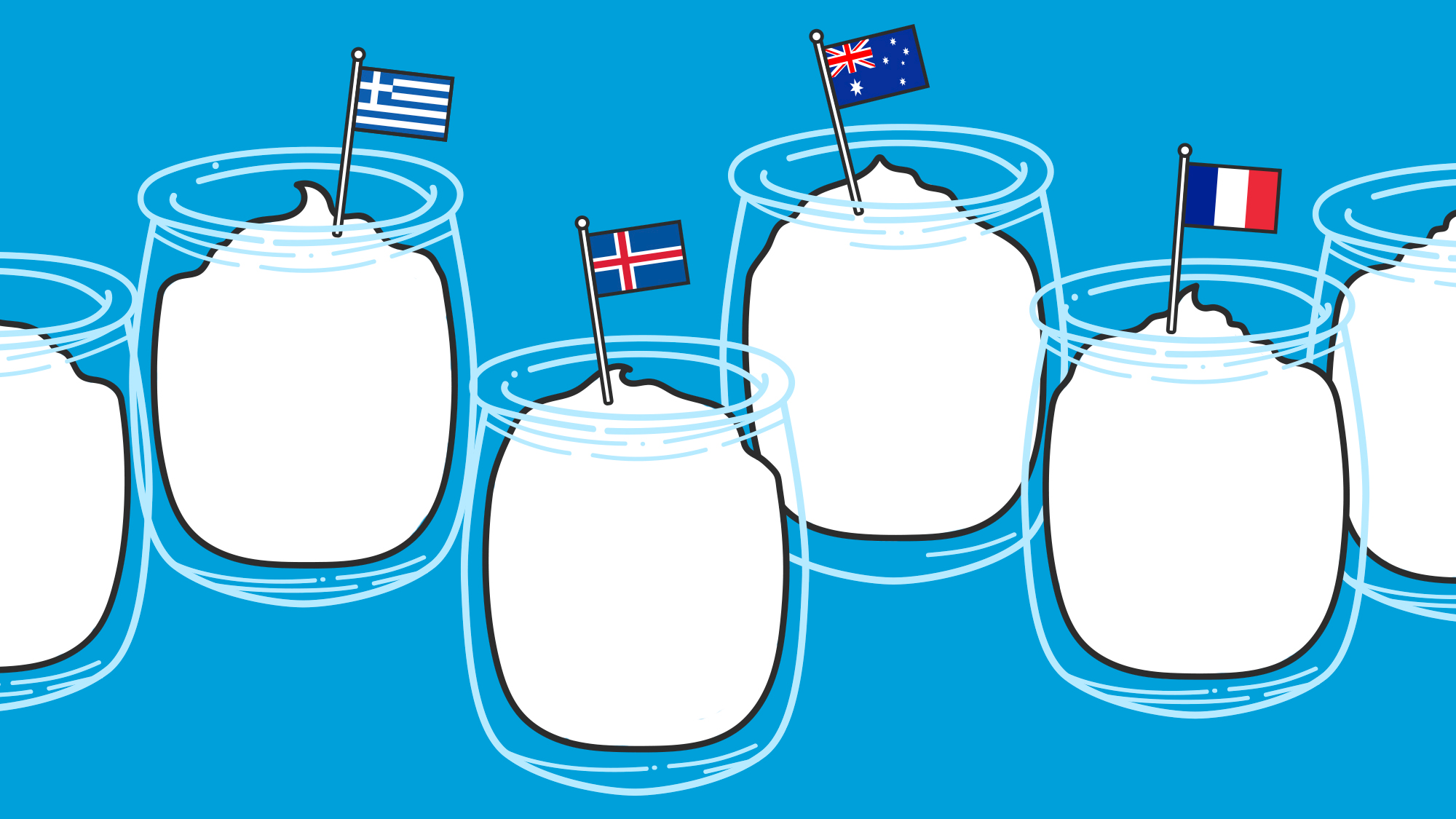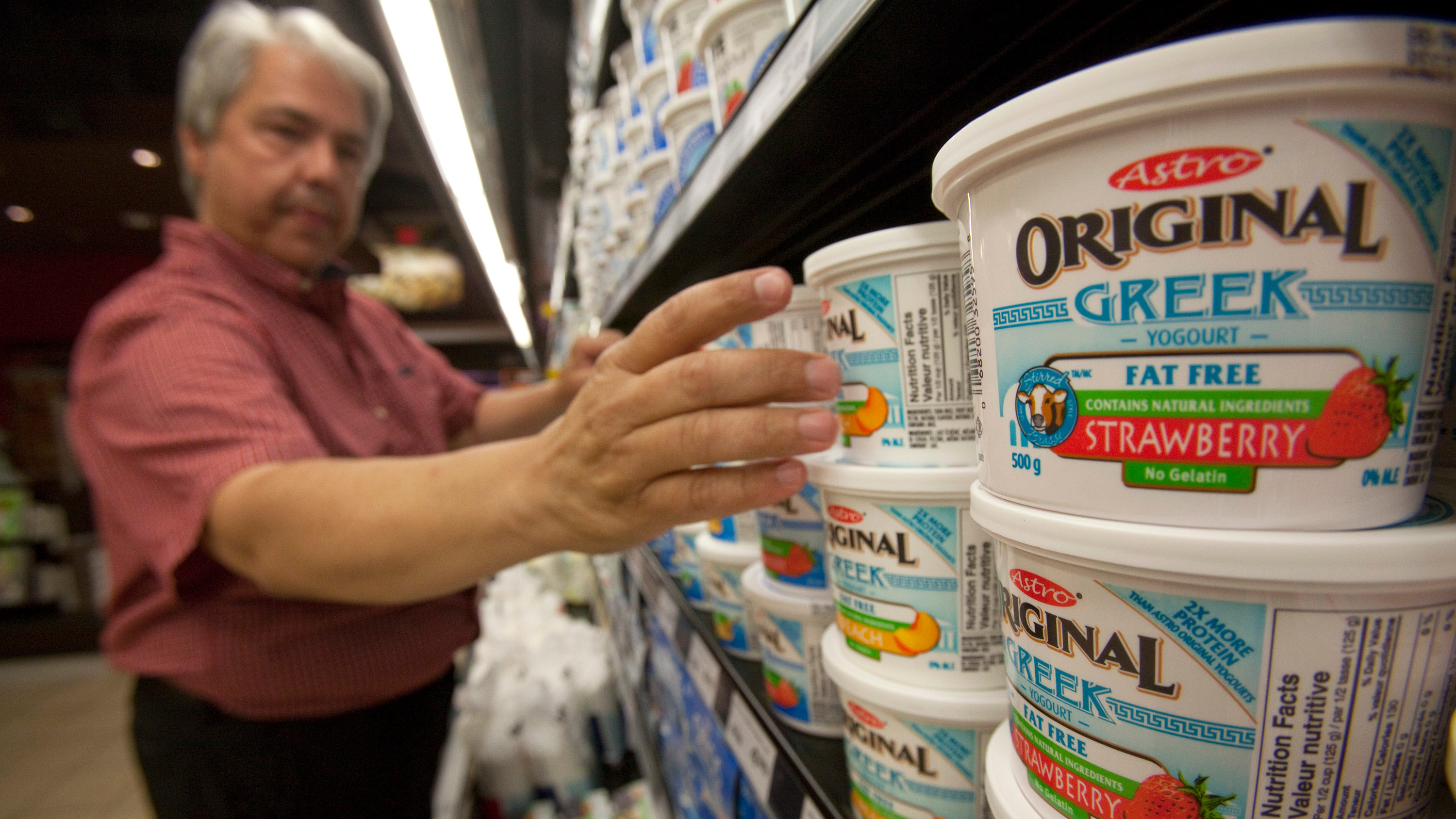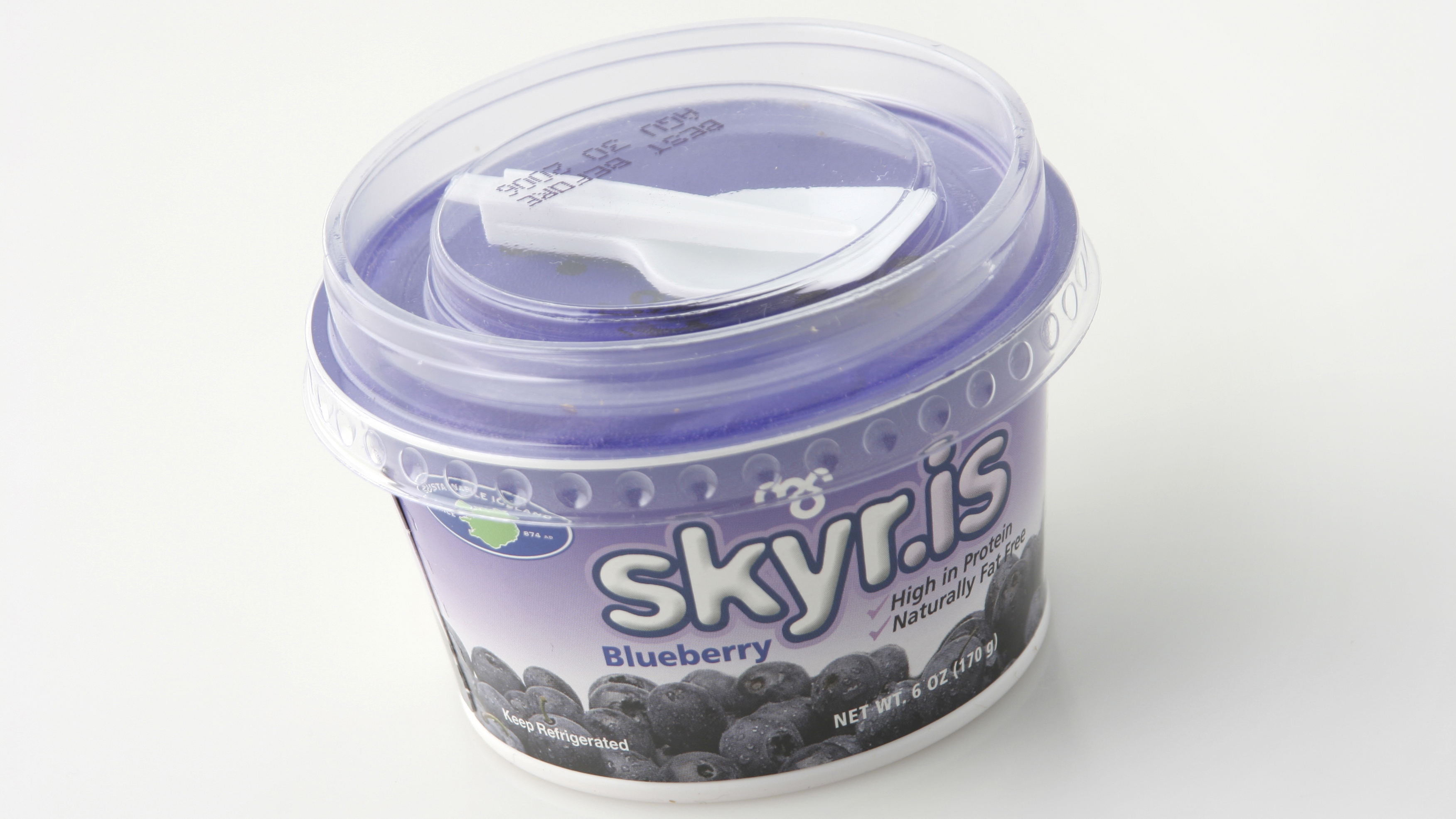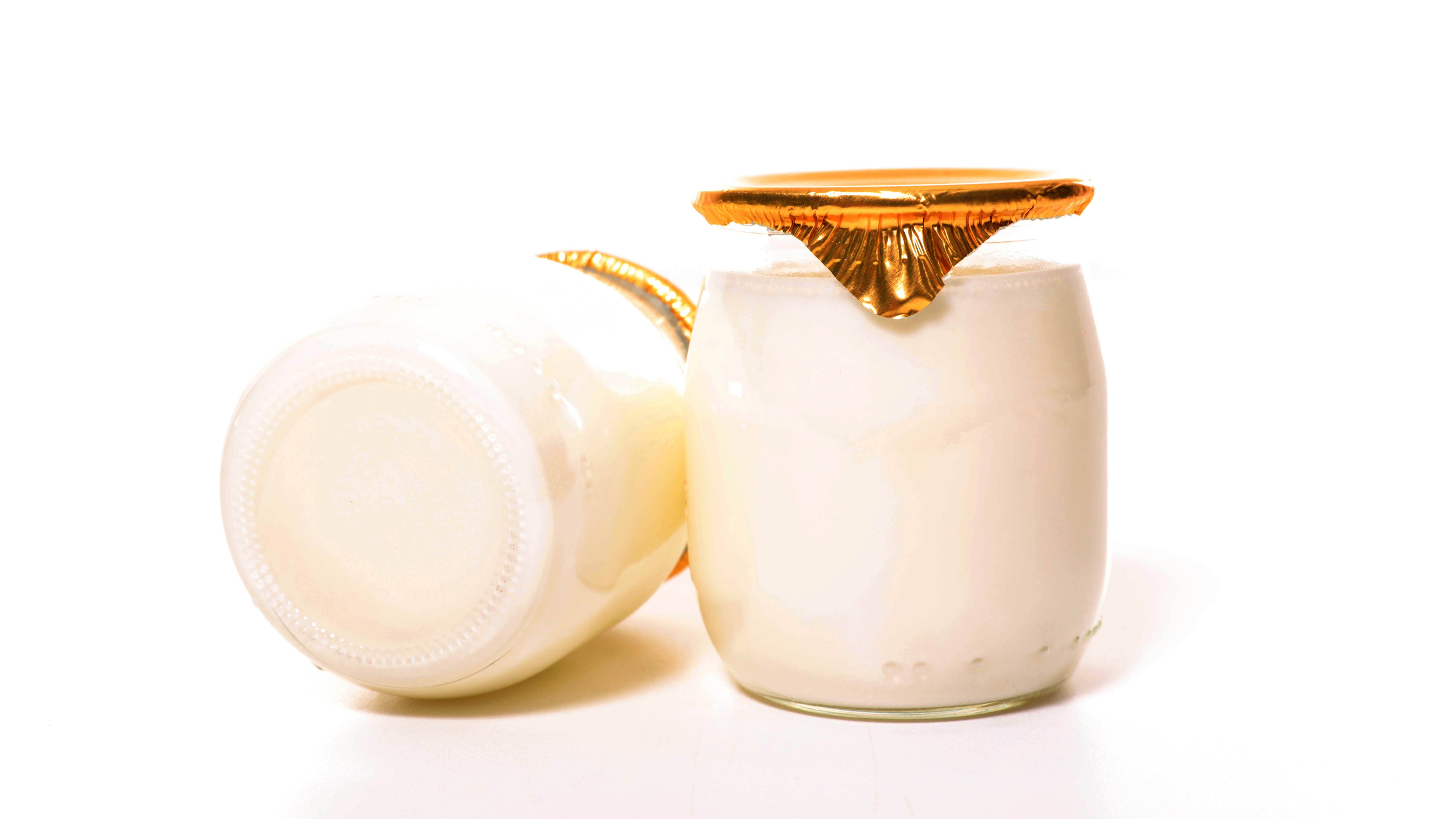What's The Difference Between All Those International Yogurts?
Today's supermarket yogurt aisles, even in middle America, resembles the United Nations. There are delegates from Greece, from France, from Australia—cute kangaroo on the package—and all the way from Iceland. Often, these fancy-sounding yogurts are priced at a premium well above the store-brand American stuff. But what's the difference between these exotic styles?
First, you need to know a quick detail about the word yogurt: A federal agency regulates what can be labeled yogurt—it has to meet a percentage of milk solids to be called that. But there's no board or group that decides what Greek or Icelandic or Australian means.
"It's really whatever the company wants to put on it for marketing reasons," says Lloyd Metzger, professor and Alfred Chair of Dairy Science at South Dakota State University.
That said, there are some general characteristics to these styles, which vary by fat content, protein content, sugar levels, and texture. Here's what to expect.
Greek yogurt
Perhaps the most common of these international yogurt styles, Greek yogurt has been on the scene for years. It's traditionally made by straining cultured milk through a sieve or cloth to remove a lot of liquid, leaving behind a protein-packed yogurt. If a Greek yogurt says "strained" on its label, the manufacturer still employs this method. But the straining takes time, so many companies simply add dairy protein—such as whey protein—to the mix to thicken the yogurt and up its protein factor. These are sometimes labeled "Greek-style" yogurt to differentiate from the strained versions.
"The argument is typically that in the versions where protein is added, just like making a protein shake, they can tend to be a little chalky tasting, a little gritty because of the proteins being added," says Donna Berry, an editor and consultant to the dairy industry for 25 years. She adds that this can be overcome by giving the protein more time to dissolve, or by using more expensive protein additions. "But if you're gonna go real cheap, it's gonna be not real appealing."
So while there could be some textural benefit to choosing strained Greek yogurt, Lloyd Metzger cautions that this method is not the environmentally preferable one. It takes three pounds of regular yogurt to make every one pound of Greek yogurt, he says, leaving behind two pounds of what's called acid whey. Acid whey is a low-pH liquid that's not really good for any secondary use, so yogurt makers struggle to dispose of it properly.
He says that innovations in protein additions have lately made for better-tasting Greek yogurts without the straining process.
"The people that make the strained product will say that it represents the more traditional way of making it, while the people making it pre-concentrated [with protein] will say it's more environmentally friendly," he says.
Icelandic skyr
Popularized by Siggi's and Icelandic Provisions, this style of yogurt—pronounced "skeer"—is a strained yogurt product (like old-school Greek yogurt) traditionally made from nonfat milk. Versions in the States, though, use milk with varying fat content. It's also generally much higher protein than regular yogurt, which—legend has it—was so that the yogurt could fuel Vikings for long days of rowing ships or pillaging.
Compared to regular yogurt, skyr is creamier and richer, the kind where your spoon leaves indentations after you've scooped it. In this way, it's not that far from Greek yogurt.
"A nonfat Greek yogurt is similar to a nonfat skyr. The difference that you'll find would be the amount of sugar added and flavors added," Berry says. "Skyr tends to have no sugar at all or just a little sweetener. Low-sugar is not the selling point of the Greek yogurt, whereas the skyr has low- or no sugar and no fat."
Australian yogurt
Noosa is the most common Aussie yogurt brand in supermarkets—even adding that intriguing 'h' in yoghurt—but private-label versions also exist. (Fun fact: Berry says the same company makes all of those private labels, so there's probably not much variation in them.) Australian yogurt's big differentiator is that it's made with full-fat milk for a richer, more indulgent taste.
"Australians are who we thank for the whole-milk yogurt comeback," Berry says. "The impact they had was a return to the deliciousness of yogurt, rather than yogurt as a diet food."
Australian yogurt tends to also be flavored with fruit, which when combined with its rich fat content, can tip it almost into dessert category—not that we shouldn't be eating it for breakfast, too.
French yogurt
Maybe you've noticed a new player in the yogurt game: Oui by Yoplait. Besides being packaged elegant glass cups like many yogurts are in Europe, Oui by Yoplait is a return to cup-set yogurt, the method by which all Yoplait used to be made.
Cup setting is a method of making yogurt where a liquid is deposited into individual jars where it firms up into the texture we expect from yogurt. That's in contrast to the method by which most American yogurt is made: A big vat of cultured milk eventually becomes thicker and is then deposited into individual containers. Cup setting produces a slightly firmer yogurt than standard American yogurt, and it has a pristine, unblended look to it that Berry compares to uncut flan.
When it's cut with a spoon, cup set yogurt retains its firmness and texture. But once it's in your mouth, it doesn't have much to differentiate it from regular blended yogurt. It also won't be much different in terms of fat or protein content. Mainly, you're paying for that pretty cup and its elegant, creamy aesthetic.
Because there's no regulations regarding the way yogurt is marketed, experts say the best thing you can do if you're looking for specific nutrition in a product—lower fat, high protein, no sugar, etc.—is to read the nutrition facts and ingredients rather than looking at how it's labeled.
Pay attention to serving size, protein content, fat, and sugars, and try a few different styles to find the consistency that you enjoy.
"It's about what you want for a profile in your diet," Metzger says, cautioning against relying solely on the marketing surrounding specific styles of yogurt.
"You're seeing a lot of those products that started as a Greek yogurt and now they might have a little more fat to it—and they're really good—but you start to get to where you're almost to sour cream or chip dip," he says, only slightly joking. "You're seeing almost this melding of yogurt, Greek yogurt, Icelandic yogurt, chip dip, sour cream, cream cheese... Put all those products side by side sometime and tell me they don't start to blend together."



